The risks and alternatives of APEO and NPEO in textiles (2/2)
Introduction
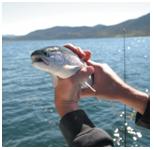 In the first part of this article the risks of the use of APEO products were shown. The second part gives information about product alternatives, global regulations and environmental advantages after the ban of APEO in Europe. Moreover, the results of the Greenpeace research about nonylphenol ethoxylate residues in textiles are discussed opposite the joined efforts of the ZDHC project.
In the first part of this article the risks of the use of APEO products were shown. The second part gives information about product alternatives, global regulations and environmental advantages after the ban of APEO in Europe. Moreover, the results of the Greenpeace research about nonylphenol ethoxylate residues in textiles are discussed opposite the joined efforts of the ZDHC project.
Alternatives to replace APEO/NPEO
In most applications, APEOs can be replaced by linear alcohol ethoxylate surfactants, which are readily biodegradable. However, direct replacement can be difficult in some situations.
In contrast to the alkylphenols, nonionic surfactants which are based on ethoxylations, are not composed of a single substance, but they are mixtures of molecules with different numbers of ethylene oxide building blocks.
There are large differences during the chemical reaction of a fatty alcohol with ethylene oxide. 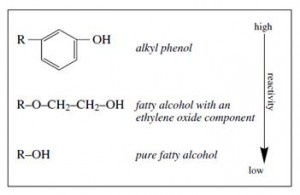 Alkyl phenols possess the highest reactivity, which made them so interesting for the chemical industry. Because of the high reactivity it is possible to synthesize an end product which contains a high percentage of the desired substance, whether or not a high or low degree of ethoxylation is sought. Since fatty alcohols are the reactants with the lowest reactivity, all fatty alcohol ethoxylates always contain a considerable proportion of unreacted fatty alcohol. Fatty alcohols are not water soluble and reduce the alkali stability of the final products.
Alkyl phenols possess the highest reactivity, which made them so interesting for the chemical industry. Because of the high reactivity it is possible to synthesize an end product which contains a high percentage of the desired substance, whether or not a high or low degree of ethoxylation is sought. Since fatty alcohols are the reactants with the lowest reactivity, all fatty alcohol ethoxylates always contain a considerable proportion of unreacted fatty alcohol. Fatty alcohols are not water soluble and reduce the alkali stability of the final products.
After years of use toxicological problems of APEOs came to light. APEOs itself are not toxic, but after the biodegrading of the ethoxylates there is a residue of fish toxic alkyl phenols. In earlier years only the toxic problem of the single product was tested. Nowadays the toxicity of the degradation products and the final residue must be tested as well, before their use is permitted. Among numerous analytical methods the so-called Wickbold method has been developed to such an extent that a waste water analysis can detect concentrations as low as 0.01 ppm.
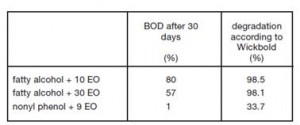 Alcohol ethoxylates (AEs) are a class of nonionic surfactants which are globally produced and used. The primary route into the environment is through down-the-drain disposal from consumer products. More than 1 million metric tons of these materials are consumed yearly. Their environmental safety is largely a function of their removal in wastewater treatment plants and lack of availability in the aquatic environment. Scientific assessment techniques have evolved through time, and awareness of important fate and effect processes were identified as research evolved. A milestone for AE environmental risk assessment was achieved in the 1990s when an extensive review of the environmental safety of surfactants used in the Netherlands market was performed[28].
Alcohol ethoxylates (AEs) are a class of nonionic surfactants which are globally produced and used. The primary route into the environment is through down-the-drain disposal from consumer products. More than 1 million metric tons of these materials are consumed yearly. Their environmental safety is largely a function of their removal in wastewater treatment plants and lack of availability in the aquatic environment. Scientific assessment techniques have evolved through time, and awareness of important fate and effect processes were identified as research evolved. A milestone for AE environmental risk assessment was achieved in the 1990s when an extensive review of the environmental safety of surfactants used in the Netherlands market was performed[28].
Typical non-ionic surfactants with favorable ecological properties can be found in the following application examples:
When dyeing knitted cotton goods it is often essential to prewash the material before dyeing. Some surfactant compounds based on alkyl ether sulphates combine a wetting, emulsifying and dispersing effect. Dyeing processes can be carried out without the need for precleaning and bath changes. When mercerizing raw cotton the use of wetting agents is still necessary. Closed end group non-ionic surfactants represent biodegradable foaming agents which can be specially combined to form products for use as low-foam wetting agents in caustic treatment and mercerization. During production and processing of synthetic fibers, difficulties arise in the majority of cases due to electrostatic charges. A particular problem is the decreasing antistatic efficiency of antistatic finishes with time, especially in the case of polyamides. By using specific ether sulphates it is possible to retain the antistatic effect on materials of polyamide fibers practically unchanged even after storage times of several months.
Regulations
In recent years, European regulations and laws on ecological textiles have increased year by year. It is important to consider them and take proactive counter measures, especially for the printing and dyeing industries. They must use purposefully ecological auxiliaries including pretreating agents, dyeing-printing formulations and finishes, and at the same time, test samples periodically.
The following list gives a rough overview about guidelines and laws, which are related with the use of APEO/NPEO products:
1986 Voluntary measures of industry of alkylphenol ethoxylates
At the 14.01.1986 the German industry voluntarily renounced the use of APEO in cleaning agents. This contract was signed amongst others from the association for textile auxiliaries, leather auxiliaries, tanning agents and washing raw material industry (TEGEWA).[29]
1993 The Paris Commission, the administrative body of the Paris Convention, which deals with the pollution of the North East Atlantic by industrial wastes, took the following approach:
‘[The Paris Commission] is concerned about NPEs because of their wide use and relatively stable degradation metabolites which may have potential toxicity to organisms and ability to bioaccumulate. In addition, the Paris Commission considers that despite the fact that NPEs have been in use for over 40 years there is little known about the consequences of their continued use.’ ’2
As a result of this, the contracting parties to the convention have agreed to phase out the use of NPEs as industrial cleaning agents by the year 2000, and to reduce all discharges to the environment. No commitments have been made with regard to octylphenol ethoxylates, uses other than cleaning or other alkylphenolic compounds
2001 The European Union agreed on a program for the cessation or phasing-out of alkylphenol and alkylphenol ethoxylates
Canada issued an environmental quality guideline (EQG) for nonylphenol and its ethoxylates. The EQG in fresh water is 1 µg/L
Proposed regulation to reduce the use of NP/NPEO’s used in cleaning products, textile wet processing a pulp and paper production by 95% by the end of 2010
2003 In the directive 2003/53/EC the EU restricted the marketing and use of products and product formulations containing more than 0.1% of NPE or NP. This applies to many industries, including the textile and leather industries, except in the case of closed application systems where no release into waste waters occurs. From January 2005 this EU Directive came into force.
Adapted to REACh Annex XVII by Commission Regulation (EC No. 552/2009)
2004 EU regulation No. 648/2004 requires the use of biodegradable surfactants unless special allowances are made
US EPA recommended an acute ambient Water Quality Criteria (WQC) for NP of 27.9µg/L and a chronic WQC of 5.9 µg/L
Green product certifications programs specifically ban the use of APE’s
Local municipalities have restricted discharge of APE’s to Publicly Operated Treatment Works (POTW)
2011 REACH: Federal Environment Agency urges regulation of octylphenol. Agency first to propose endocrine disrupter for evaluation according to EU chemicals law (29.8.2011)[30]
Nonylphenol is favored by American detergent industries. Meanwhile, Europeans have banned the use of the nonionic surfactant nonylphenol. Apparently, in the US, a number of studies have shown that sewage treatment plants remove on average 95% of nonylphenol and its ethoxylates from wastewater. Industry reports suggest that nonylphenol and nonylphenol ethoxylates do not tend to bioaccumulate in the bodies of fish and in other animals. This would mean that they do not become a part of the food chain. Typical concentrations of NP/NPEs in the environment are below 1 ppb. (NP) is a minor degradation intermediate of nonylphenol. [31]
When we consider the American study of nonylphenol discussed above, what would be the impact of the approximately five percent of nonylphenol and its ethoxylates which, according to the study, would remain unaltered in treated sewage waste water? This is the effluent which is to be released into the environment. European experts have considered this and responded accordingly. In America, this and other facts have not affected the choices made by the regulators of these materials.
There is also a complete different way to handle the APEO/NPEO issues in America and Europe. The Alkylphenol & Ethoxylate Research Council (APERC) [32] in America has a completely different view on the problem compared to than the European organization, the European Council for Alkylphenols and Derivates (CEPAD)[33].
Results of the voluntary measures of the German Industry
In 1986 and 1992, the German industry voluntarily renounced the use of APEO in cleansing agents. Since then, contamination of bream with APEO and their degradation products in German rivers declined. Contamination of blue mussels from the North and Baltic Sea was generally low and decreased further between 1986 and 2001.
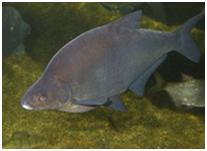 In order to assess the contamination of aquatic biota and to evaluate the effectiveness of the regulatory measures a retrospective monitoring was performed analyzing bream from German rivers and blue mussels from the North Sea and Baltic Sea for 4-nonylphenol (4NP), 4-nonylphenol monoethoxylate (4NP1EO), 4-tert-octylphenol (4tOP) and 4-tert-octylphenol monoethoxylate (4tOP1EO).
In order to assess the contamination of aquatic biota and to evaluate the effectiveness of the regulatory measures a retrospective monitoring was performed analyzing bream from German rivers and blue mussels from the North Sea and Baltic Sea for 4-nonylphenol (4NP), 4-nonylphenol monoethoxylate (4NP1EO), 4-tert-octylphenol (4tOP) and 4-tert-octylphenol monoethoxylate (4tOP1EO).
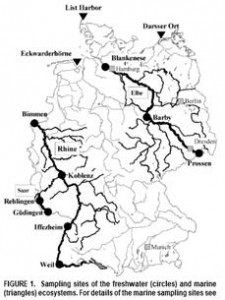 Furthermore, among the nonyl compounds, levels of nonyl monoethoxylate were up to 5 times higher than nonylphenol. Highest contamination was observed in bream from the Saar sampling site Güdingen with 4NP1EO levels of 29.2 – 324 ng/g and 4NP levels of 9.8 – 112 ng/g wet weight (ww) in the period between 1992 and 2001. Bream from the rivers Rhine and Elbe were significantly less contaminated and showed APEO/AP-levels partly below the respective limit of quantification (LOQ). During the study period contamination decreased at all sampling sites [34,35].
Furthermore, among the nonyl compounds, levels of nonyl monoethoxylate were up to 5 times higher than nonylphenol. Highest contamination was observed in bream from the Saar sampling site Güdingen with 4NP1EO levels of 29.2 – 324 ng/g and 4NP levels of 9.8 – 112 ng/g wet weight (ww) in the period between 1992 and 2001. Bream from the rivers Rhine and Elbe were significantly less contaminated and showed APEO/AP-levels partly below the respective limit of quantification (LOQ). During the study period contamination decreased at all sampling sites [34,35].
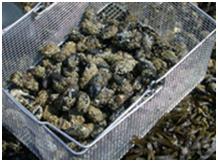 Contamination of mussels from the North Sea sampling site Eckwarderhörne was higher than in mussels from the Schleswig-Holstein Wadden Sea and the Baltic Sea. 4NP-concentrations in mussels from Eckwarderhörne ranged between < 2 ng/g (the limit of quantification, LOQ) and 9.7 ng/g ww. During the study period concentrations decreased and were below the respective LOQ after 1997. 4NP1EO was detected only until 1989. Levels of 4tOP were low with maximum values of 0.5 ng/g ww, and 4tOP1EO was not detected at all[32].
Contamination of mussels from the North Sea sampling site Eckwarderhörne was higher than in mussels from the Schleswig-Holstein Wadden Sea and the Baltic Sea. 4NP-concentrations in mussels from Eckwarderhörne ranged between < 2 ng/g (the limit of quantification, LOQ) and 9.7 ng/g ww. During the study period concentrations decreased and were below the respective LOQ after 1997. 4NP1EO was detected only until 1989. Levels of 4tOP were low with maximum values of 0.5 ng/g ww, and 4tOP1EO was not detected at all[32].
The results of the retrospective monitoring underline the efficiency of the voluntary measures in reducing APEO/AP-emissions into the aquatic environment. Converting tissue levels to water concentrations reveals that, in 2001, nonylphenol and octylphenol met the environmental quality standards (EQS) defined by the Water Framework Directive, i.e. 0.3 µg/L for 4-nonylphenol and 0.1 and 0.01 µg/L for 4-tert octylphenol in inland surface waters and other surface water, respectively.
Environmental Statement of the Brands
Many of the top international fashion and apparel brands have in their ecological policy statements like:
“We also collaborate with factories to improve efficiency in order to avoid borrowing more water than is needed and to be able to return it as clean, or cleaner, than it was found”[36]
“Our strategy is to become a zero-emissions company“[37]
“Factories will be held responsible and liable for all loss and damage suffered by PUMA, should any hazardous substances be found in the materials, components or final products”[38]
“We apply the precautionary principle in our environmental work and have adopted a preventative approach with the substitution of hazardous chemicals.”[39]
But the reality is often somewhat different. The Detox Campaign of Greenpeace was designed to expose the links between clothing brands, their suppliers and toxic water pollution around the world. The Greenpeace studies found that these NPEs aren’t just expelled into wastewater – they also remain in the finished textile. The chemicals found in the finished clothing of top name brands (Calvin Klein, Levi’s and Victoria’s Secret, among others) included nonylphenol ethoxylates (NPEs). Concentrations of NPEOs were found in 89 garments (just under two thirds of those tested) at levels ranging from just above 1 part per million up to 45000 parts per million in the top name brand items tested (Calvin Klein, Levi’s, Victoria’s Secret, H&M, Gap among others); over 20% of the items tested had more than 100 parts per million.[40]

Alkylphenol ethoxylate detergents were introduced in the middle of the last century; 50 years later their persistence, bioaccumulation and oestrogenic effects are known to an extent of scientific certainty the data presented in this report indicates that these chemicals should be phased out as fast as possible. They do not degrade adequately in sewage treatment, they persist in the environment, they breakdown to form toxic intermediates and they may have oestrogenic effects at current environmental concentrations.
The contamination of the surface water with alkylphenol ethoxylates is not only a local issue of the production areas; these products are found all over the world in lower or higher concentrations. There are also many tasks in which non-ionic surfactants are absorbed in the substrate and thus do not enter the waste water in the plant, but later on in the domestic washing off. The adsorption of surfactants depends to a large extent on the class and the constitution of its hydrophilic and hydrophobic elements.
In 1997, the association for textile auxiliaries, leather auxiliaries, tanning agents and washing raw material industry (TEGEWA) has made a survey under their members about the use of APEO products, the fate of the substances and their waste water relevance. The outcome of this study was an amount of 37 t/a APEO with waste water relevance. Moreover the highest amounts APEO amounts are caused by imported textiles (raw textiles as well as finished textiles). These on the fabric absorbed amounts will be washed out in the (domestic) washing and attain into the waste water. After a rough estimation arise in Germany on this path 500 t/a NPEO. This amount means about 12,5 t/a toxic NP emission in the surface water.
In 2012 Greenpeace has tested 141 articles in which NPEs were quantified, 89 articles (63 % of the total) tested positive for the presence of NPEs at concentrations above the limit of detection (1 mg/kg), at levels ranging from just above 1 mg/kg up to 45.000 mg/kg. The highest concentration (45 000 mg/kg) was detected in a sample of fabric bearing a plastisol print from a C&A branded t-shirt manufactured and sold in Mexico[5].

The following chart gives the number of samples, in which NPEs were identified by the place of sale, with the NPE concentration range. That chart show the distribution of the product all over the world[5]:
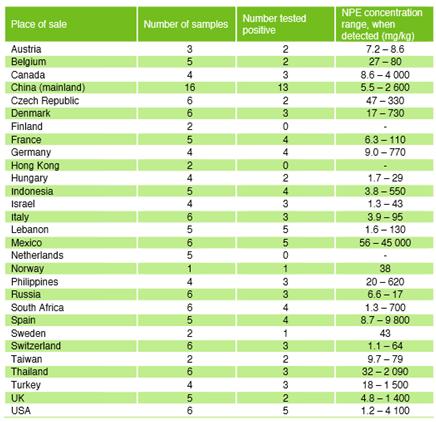
In Europe and America various different guidelines and laws are in place to address the issue of nonylphenol ethoxylates. But the limits of NP in surface water are completely different between Europe and America. Moreover there is a strong lobby in America (APERC) which sees APEO as one of the best products. For this organization “alkylphenols (APs) are chemical intermediates that are reacted with other compounds to create derivative products, which are then used to make high-value, high-performance compounds that are used in a variety of applications.” APERC looks primarily at the risk for human health, but less at the environmental impact “The nominations for OP and NP were based on the argument that these substances have weak estrogenic activity and alleged these compounds could have ‘probable serious’ effects in fish but not to human health.”.
Most studies and all laws in the different countries only discuss the toxicity of NP, NP1EO, NP2EO and NPEC products. But this includes only 80% of the APEO products. The following AP/APEO compounds have been designated in the Annex XV of REACH – Substance of Very High Concerns (SVHC):[41]
• 4-(1,1,3,3-tetramethylbutyl)phenol [covering well-defined substances and UVCB substances, polymers and homologues] , also described at para-tert-octylphenol (OP)– Effective December 19, 2011
• Nonylphenol, branched and linear (NP), also described broadly as “substances with a linear and/or branched alkyl chain with a carbon number of 9 covalently bound in position 4 to phenol, ethoxylated covering UVCB- and well-defined substances, polymers and homologues, which include any of the individual isomers and/or combinations thereof” – Effective December 19, 2012
• 4-(1,1,3,3-tetramethylbutyl)phenol, ethoxylated – Covering Well-defined Substances and UVCB Substances, Polymers and Homologues, more commonly known as octylphenol ethoxylates (OPE) – Effective December 19, 2012.
Based on the detox campaign from Greenpeace was in 2011 the ZDHC project started. In the meantime there are 17 international brands organized in this project. Their benchmarking project goal is to verify whether 11 priority chemical classes are present in wastewater discharge or sludge at various supplier locations. The project also aims to document and understand how textile processes and chemicals management connect to the possible discharge of priority chemicals at supplier sites. The 11 chemical classes represent nine classes historically targeted for elimination in industry restricted substances list (RSLs) plus two additional classes—alkylphenol ethoxylates (APEOs) and perfluorinated chemicals (PFCs), including perfluorooctanoic acid (PFOA) and perfluorooctane sulfonate (PFOS)[42].
There are not only pure NPEO products, which are used for washing processes and so easy to identify (e.g. MSDS). But there are also hidden amounts of NPEO in different complex compounds, which may also include NPEO products, for example pigment preparations. In pigment printing, selected non-ionic emulsifiers based upon ethylene oxide addition compounds are used on selected alkylphenols. These products, which were specially developed for pigment printing, have the advantage of better print fastness compared to anionic emulsifiers. Furthermore, they are effective in an acid and alkaline environment and have a lower foaming effect. As detergents, they have the task of reducing the interfacial tension between water and disperse phase in disperse systems. In pigment print pastes, they guarantee the maintenance of dispersion stability of the pigment, binder and softener[43].
The study of the German Federal Environmental Agency (UBA) has shown that a renouncement of this products reduce the toxic NP residues in the surface waters. But the job is not done if only some selected countries ban APEO products. If they are still used at production site of textile processing in locations where APEOs would still be allowed, they eventually come back to all counties through the imported textiles.
Future actions
Only an international ban of APEO products in the different application areas reduces the global impact to the environment. In the meantime lots of alternative products are in the market, which can be used instead of APEOs. All alternative products must be thoroughly tested before they are distributed all over the world. It is wrong to use chemicals if their environmental fate and toxicity are not known. A chemical should not be used for 50 years whilst knowledge of its environmental fate is minimal. The European REACH concept is a significant step in the right direction, but they control only the chemicals, which are produced in Europe or imported to Europe, and not the chemical which comes with the textiles in the EU.
If the textile producers work without APEO the price of finished t-shirts or trousers will not increase. Alternative chemicals will increase the manufacturing cost only marginally, perhaps a few in cents. Much more expensive will be the costs of controlling the textiles and production plant. The brands have to take spot tests to control the suppliers, whether all environmental aspects are controlled during production. If supplier would run the risk of losing the production order and be black-listed in case they would not comply with the specifications, would be one way for improvement (comparably to the automotive industry). This should be one of the important criteria in the ZDHC program.
The brands of the ZDHC project (and all others) have to act in two directions: On the one hand to apply pressure to the chemical suppliers to deliver only products which are free of APEO free, and on the other hand to control that the textile production sites only use APEO free products.
Greenpeace has stepped up its efforts to publicly put pressure on the brands to commit to the Zero Discharge of Hazardous Chemicals (ZDHC) program. The ZDHC program of is running now since approximately 24 months, but the progress is questioned by Greenpeace. The environmental pressure group divides brands into the self-explanatory categories of ‘leaders’, ‘greenwashers’ and ‘laggards’ [44,45] in which the commitment to elimination of hazardous chemicals such as APEOs was an important criteria. There are enough alternative products available in the market which can replace APEO and NPEO products. Only future will tell how brands will deliver against their commitments.
[28] AISE (Association Internationale de la Savonnerie et de la Détergence), CESIO (Comité Européen des Agents de Surface et leurs Intermédiaires Organiques), 1996. Environmental risk assessment of detergent chemicals. In: Proceedings of the AISE/CESIO Lamellate III Workshop, November 28–29, 1995.
[29] FIHO Industrieverband Hygiene und Oberflächenschutz für industrielle und institutionelle Anwendung: Freiwillige Verzichtserklärung auf Alkylphenolethoxylate (APEO)
[31]Mihaich, E. et al; Relative Toxicity Ranking of Nonylphenol Ethoxylates and theirDegradation Intermediates to Estimate Cumulative Risk [Internet] Kansas City, MO: AOCS; May 7, 2003.
[33] CEPAD Position Papers
[34] Umweltprobenbankdes Bundes: Alkylphenol compounds
[35] Umweltprobenbankdes Bundes: http://www.umweltprobenbank.de/upb_static/fck/download/Alkylphenole.pdf
[36] NIKE Inc Corporate Responsibility Report FY 07 08 09, pg.38
[37] Adidas Group, http://www.adidas-group.com/en/sustainability/Environment/green_company/default.aspx
[38] PUMASafe: HandbookofEnvironmental Standards 2009
[40]Greenpeace, „Dirty Laundry: Reloaded – how big brands are making consumers unwitting accomplices in the toxic water cycle
[42] ZDHC roadmap to zero
[43] H.K. Rouette “Encyclopedia of Textile Finishing“, Springer-Verlag Berlin Heidelberg New York, ISBN 6-84569-065-6, 2002
[44] Greenpeace: The Detox Catwalk (2013)


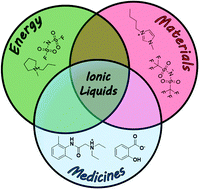


Pingback: Greenpeace Issues New Toxic Warning on Children’s Clothing | EcoDaily
I am working in a Denim Fabric Manufacturing Company as Manager Compliance i need some help about APEO, NPEOs, how can we remove it in our waste water so that our waste water test report will be meet to Standard.